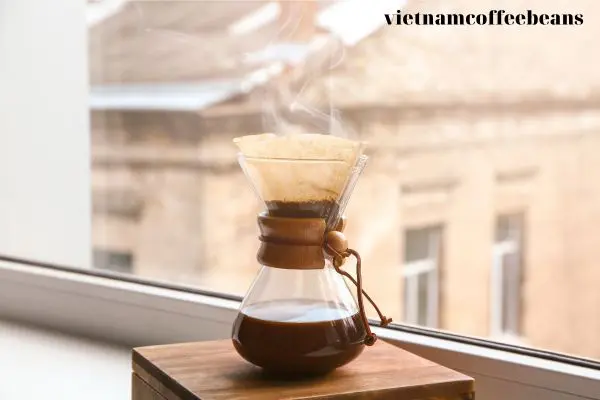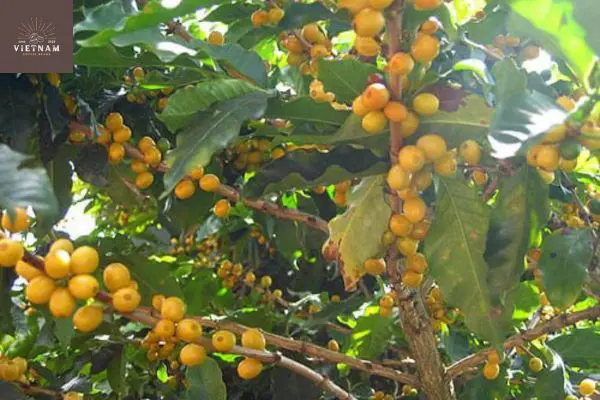If you are a coffee lover, you might have wondered how the specialty coffee grading system works. How do experts evaluate the quality and flavor of different coffee beans? What are the determinants of coffee bean price?
As a coffee enthusiast, I have always been fascinated by the intricate process that goes into creating a perfect cup of specialty coffee. One aspect of this process that often gets overlooked is the grading system.
Understanding how coffee is graded will assist you in identifying high-quality beans and getting the most out of your brew. The specialty coffee grading system is a vital tool used by industry professionals to evaluate and categorize various varieties of coffee based on their quality, flavor profile, and other characteristics.
In this article, we will dive deep into the specialty coffee grading system to help you gain a better understanding of what it entails and how it can benefit your overall coffee experience.

What Exactly Is Specialty Coffee?
What’s so special about this brew? Let’s take a closer look at what sets specialty coffee apart from the rest.
Specialty coffee is not your average cup of joe. It’s a unique, high-quality coffee that’s been carefully selected, roasted, and crafted by skilled professionals to bring out its best flavor profile.
Unlike regular coffee, which may contain low-quality beans or be mass-produced without much thought given to its taste and quality, specialty coffee undergoes a rigorous process of origin identification and careful roasting. Coffee roasting plays an essential role in creating the unique flavors of specialty coffees.
Roasting involves heating green coffee beans until they reach their desired level of roast, which can range from light to dark. The degree of roast affects the flavor profile of the resulting coffee. Specialty coffees are often roasted with more care than regular coffees since maintaining the bean’s quality is crucial for bringing out its unique characteristics.
Another important aspect of developing coffee that is unique is identifying the origin. Coffee beans come from all over the world, each with its own distinct flavor profile based on factors such as climate, altitude, and soil composition.
By identifying where a particular batch of beans comes from and how it was grown and processed, experts can develop unique blends that highlight those specific flavors and aromas associated with that region.
Specialty coffee offers an exceptional experience for those who appreciate high-quality beverages derived from carefully sourced ingredients. Its complex flavors result from careful roasting techniques combined with an understanding of where each bean comes from—making every sip a journey through different regions worldwide.
For these reasons, it’s no wonder why specialty coffee continues to gain popularity among discerning consumers looking for something extraordinary in their daily routine!
Coffee grading process
Let’s dive into how those beans get sorted and evaluated before they make it to your cup. The grading system is a crucial part of the specialty coffee industry, as it ensures that only the highest quality beans are selected for roasting and brewing.

The process involves several steps, including visual inspection, moisture testing, and cupping. During visual inspection, experts examine the beans for defects such as insect damage or mold growth. If any defects are found, the beans are immediately rejected.
Moisture testing is then conducted to determine whether the beans have been properly dried after harvesting. This is important because excess moisture can lead to mold growth during storage.
Finally, cupping is performed to evaluate the flavor profile of each bean sample. This involves brewing small batches of coffee using precise measurements of water and grounds and evaluating them against a set of scoring criteria. The four main categories used in this evaluation process are fragrance/aroma, flavor, aftertaste, and acidity/brightness.
Overall, the grading system plays a vital role in maintaining quality control throughout every stage of production in the specialty coffee industry. By ensuring that only top-grade beans make it to market and ultimately into our cups, we can be sure that we’re getting an exceptional experience with every sip.
If you love coffee, you might want to learn more about the specialty coffee grading system. This system helps you find the best beans for your brew, based on factors like aroma, flavor, body, acidity, and defects.
The higher the grade, the higher the quality and the price. But did you know that how pre-ground coffee affects quality? When you grind your beans, you expose them to oxygen, which can degrade their freshness and flavor.
That’s why it’s better to buy whole beans and grind them right before brewing. This way, you can enjoy the full potential of your specialty coffee and taste the difference!
Factors that Affect Coffee Grading
Factors like bean size, altitude, and processing methods can impact the quality and grade of coffee beans.
Bean size is an important factor since it affects how evenly the coffee will roast. Larger beans tend to roast more slowly than smaller ones, so they need a different roasting method.
Altitude also plays a significant role in determining the quality of coffee beans. Higher altitudes with cooler climates are ideal for growing high-quality coffee since they allow the cherries to mature slowly.
Climate conditions also affect the flavor and aroma profile of coffee beans. The amount of rain, amount of sunlight, temperature fluctuations all impact how the plant will develop its flavors. Coffee plants thrive in regions where there is plenty of sunshine and regular rainfall without extreme weather changes that could harm or stunt their growth.
Roasting methods have a significant effect on coffee grading as well. The way that roasters approach their craft can make or break a batch’s taste profile. Specialty roasters use unique techniques like air-roasting or drum-roasting to ensure consistency across all batches while highlighting each bean’s unique characteristics fully.
This attention to detail helps them achieve higher grades for their coffees at auctions and competitions worldwide.
Differences Between Specialty and Non-Specialty Coffee
You might be wondering what sets specialty coffee apart from non-specialty coffee and why it matters to your daily cup of joe. The answer lies in the quality indicators and taste profiles that differentiate the two types.

Here are some key differences:
- Specialty coffee is graded on a scale of 80-100, while non-specialty coffee is not graded at all.
- Specialty coffee is grown in specific regions with ideal growing conditions and harvested by hand, while non-specialty coffee may come from a variety of sources.
- Specialty coffee undergoes rigorous quality control measures to ensure consistency, while non-specialty coffee does not receive the same level of attention.
- Specialty coffees often have unique flavor profiles due to their specific growing conditions and processing methods, while non-specialty coffees tend to have more generic flavors.
These differences may seem small, but they can greatly impact the taste and overall enjoyment of your cup of coffee. By choosing specialty coffee, you’re ensuring that you’re getting a high-quality product with unique flavor characteristics that have been carefully cultivated for your enjoyment.
So next time you’re deciding between specialty and non-specialty coffee, remember these key differences and choose accordingly. Your taste buds’ll thank you for it!
Choosing and Brewing Specialty Coffee
If you want to experience the true joy of a perfectly brewed cup of coffee that will make your taste buds dance with delight, then it’s time to learn how to choose and brew specialty blends. The first step in choosing specialty coffee is to understand its flavor profile. This refers to the unique combination of aromas, flavors, body, acidity, and finish that each blend possesses.
To help you make an informed choice, I have created this table that compares the characteristics of two different types of roasted coffee: light roast and dark roast. As you can see from the table below, light roasts are typically more acidic and have a lighter body compared to dark roasts. On the other hand, dark roasts are full-bodied with lower acidity but tend to be less complex in flavor.
Once you’ve chosen your preferred type of roast, it’s important to brew it correctly for maximum enjoyment. One key element is water temperature; ideally, water should be between 195-205°F (90-96°C) for proper extraction.
Another crucial factor is grind size: finer grinds work best for espresso machines while coarser grinds suit French press or drip methods better. By following these guidelines and experimenting with different brewing techniques, you’ll soon discover your perfect cup of specialty coffee!
| Light Roast | Dark Roast |
|---|---|
| High acidity | Low acidity |
| Lighter body | Full-bodied |
| More complex flavors | Less complex flavors |
| Higher caffeine content | Lower caffeine content |
Frequently Asked Questions
Conclusion
In conclusion, understanding the specialty coffee grading system is essential for anyone who wants to experience a truly exceptional cup of coffee. The process of grading coffee involves evaluating various factors such as aroma, flavor, acidity, body and aftertaste. These are all important aspects that contribute to the overall quality and taste of the coffee.
When it comes to choosing and brewing specialty coffee, it’s important to keep in mind that there are many different types available from around the world. Take some time to explore and experiment with different varieties until you find one that suits your taste buds.
With proper storage and preparation techniques such as grinding your beans fresh before brewing and using filtered water at the right temperature, you can unlock the full potential of your specialty coffee beans for an unforgettable cup every time.






